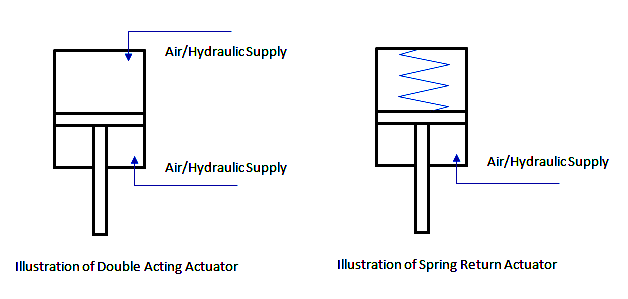There are basically two types of actuators : single action and double action.
Single action is a control valve that is driven by the air output of the control valve positioner on one side (side open or close) while the other side is moved with the aid of a spring or a membrane; Double action is a control valve that is driven by the output air of control valve positioner on both sides (sides open and close).
In typical application of the ball valve, control valve, and choke valve, there are two types of actuator that is used, the spring return (or single acting) actuator and the double acting actuator.
The spring return actuator is the actuator that used spring force to place the valve position in close or open position. We only need to pressurize on one side only to operate the valve, the return of the actuator by the force of Spring or memebrane. Normally, it's divided to direct action or reverse action. For example for control of globe valve; in direction action design; instrument air from output of positioner should connect to the bottom of actuator; the driven force increase to lift the stem and increase opening of the valve; while reverse action should be opposite.
The double acting actuator is the actuator that only use piston type actuators as its element to operate the valve. It needs to pressurize both side of the actuator alternately to operate the valve. See below drawing that illustrates the spring return and double acting actuators.

Previous: Introduction of Relay contact switch
Next: PlantWeb Gamma New online corrosion application in ecosystem